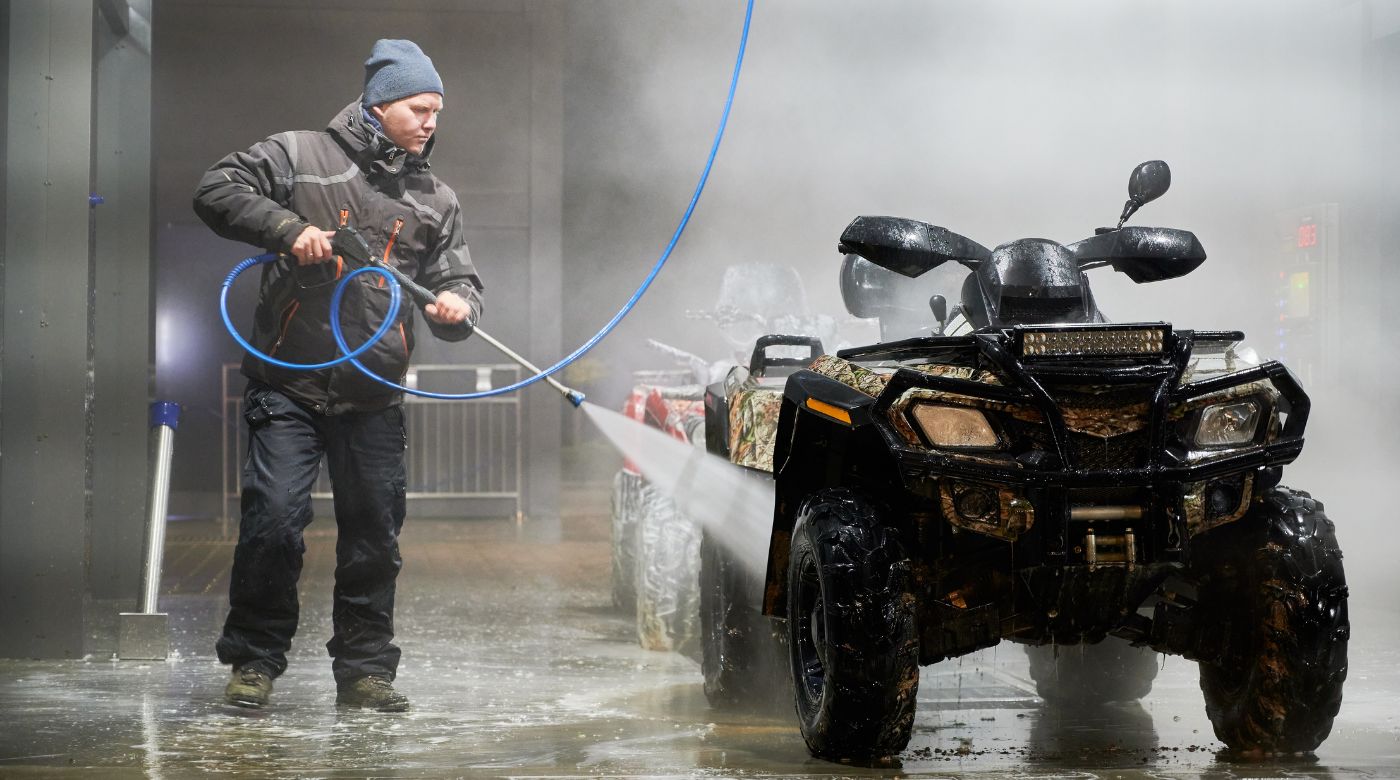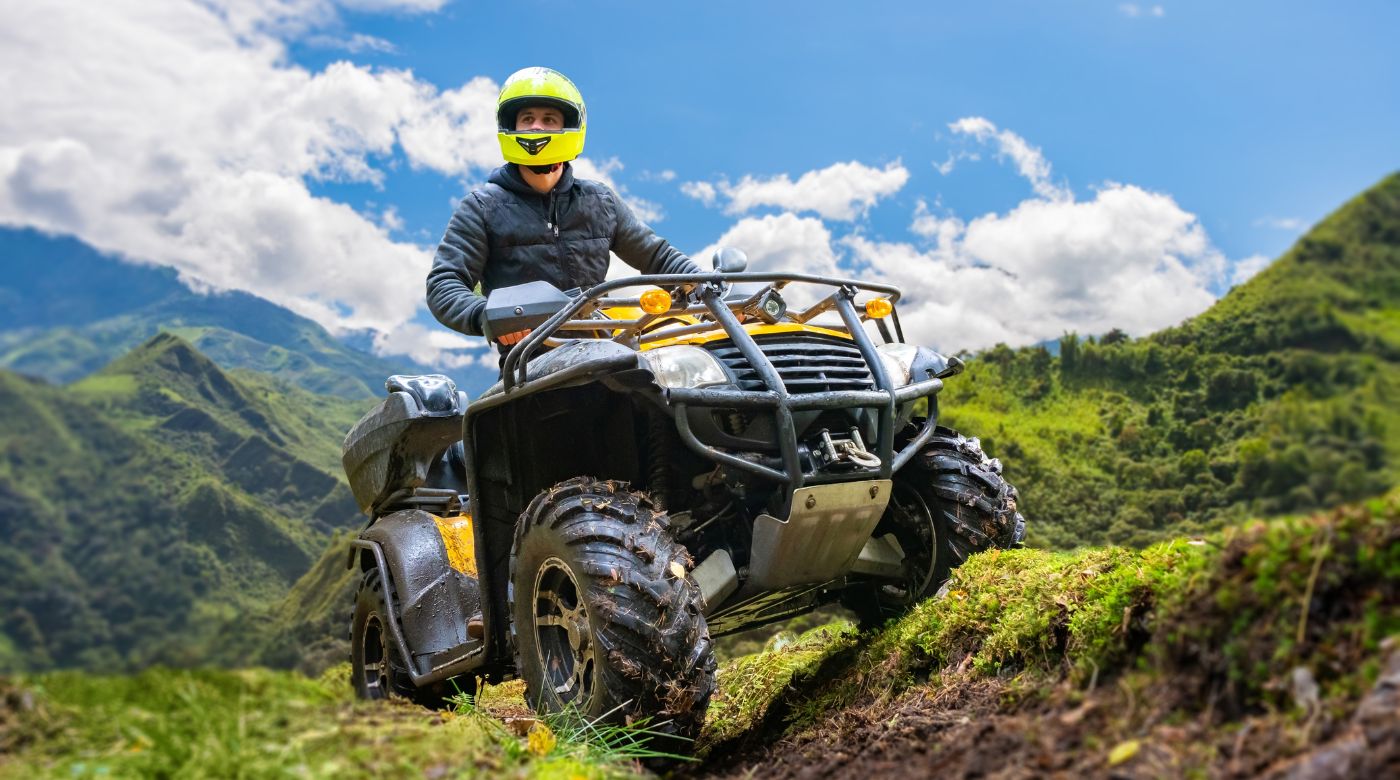Your next off-road adventure starts with servicing your all-terrain vehicle. ATVs need regular maintenance to tackle the outdoors, including rigid rock formations, mud-soaked trails and salt-swept beaches. The harder you ride, the more you need to repair your machine. Rough environmental and excess debris can gunk up the engine, dramatically limiting its lifespan. Use these ATV maintenance tips to keep riding for years to come.
1. Clean the Exterior
Your quad will be a magnet for dirt and debris. That’s part of the fun of going off-road, but all that moisture can lead to corrosion and clog the engine. Clean the mud, leaves and sand off the exterior at least once a week using soap and water.
2. Inspect Your Gear
Extend the same courtesy to your ATV riding gear. Check the helmet for cracks and wipe down the interior and exterior with disinfectant and a clean rag. If you use off-road communication to communicate hands-free with other riders, clean off the device to keep it securely mounted to your helmet.
Get the Packtalk Edge ORV to insulate your tech from the elements. It’s completely waterproof and has a durable, lightweight design that can withstand wet and wild rides. It uses Dynamic Mesh technology to communicate with other units when in range to stay connected on the trail.
Launder your gloves, suit and gear according to the manufacturer’s guidelines. Using the wrong detergent or washing them on the wrong setting could reduce their protective properties. Replace items with holes and rips to keep dirt out of your clothes. Find the best ATV mudding gear for tackling swamps, forests and streams.

Source: CHOTE BKK/Shutterstock.com
3. Examine the Tires
Adjust tire pressure according to the owner’s manual. Use an air pressure monitor to check the psi levels. Use a higher psi on hard terrain to prevent punctures and a lower psi on sand and loose dirt to increase surface contact. Remove any pebbles or twigs lodged in the rubber. Look for holes or weak spots that could lead to a flat. Change any tires with worn tread patterns to maintain traction.
Learn More About ATV Tire Sizes Here
4. Change the Oil
Engine oil lubricates parts to prevent overheating. Many experts recommend changing the oil after the first month or 25 hours of riding. After that, change it after 100 hours of riding, six months or 1,000 miles, whichever comes first.
If you keep your ATV locked up in the winter, change the oil before your first ride of the season. Water separation in the fuel tank can spread rust throughout the engine, contaminating the oil. Temperature changes also affect oil viscosity, which can lead to clogs.
5. Test the Battery
The battery will gradually lose power over time. It activates the spark plugs to trigger the internal combustion process, which starts the engine. Cold weather makes it harder to generate electricity, leading to longer start times. Excess water can also lead to rust or short-circuit the battery terminals. Clean the exterior with a dry rag. Check the voltage and replace aging units to avoid getting stuck.
6. Check the Exhaust
The exhaust lets the engine exhale. However, it usually sits low to the ground and can easily get weighed down with debris, especially after being submerged in water. Clean the exhaust inside and out and check for smoke coming out of the tailpipe. You can also try raising the exhaust using an extension to wade through rivers safely.
7. Service the Brakes
Check the brake lines and calipers for damage, replace worn brake pads and maintain proper brake fluid levels to stop on a dime. Long, aggressive rides can overheat the brakes, which increases erosion. Switch to synthetic brake fluid that can withstand higher temperatures. Drain the system completely when switching to avoid mixing fluids.
8. Replace the Filters
Various filters remove debris from the air, fuel, and oil to keep it from reaching the engine. Riding through the mud, sand, and dirt exposes these filters to more debris until they clog. To avoid choking the engine, replace the filters at or before the recommended service intervals.

Source: vladimir subbotin/Shutterstock.com
Owning an ATV comes with great responsibility. These machines work hard to get you through nature. They’re exposed to more wear and tear than traditional passenger vehicles and require more maintenance. Don’t let the elements get the better of your quad. Use these tips to keep it looking its best so you can get back to enjoying the ride.
Try the Packtalk Edge ORV Today!




